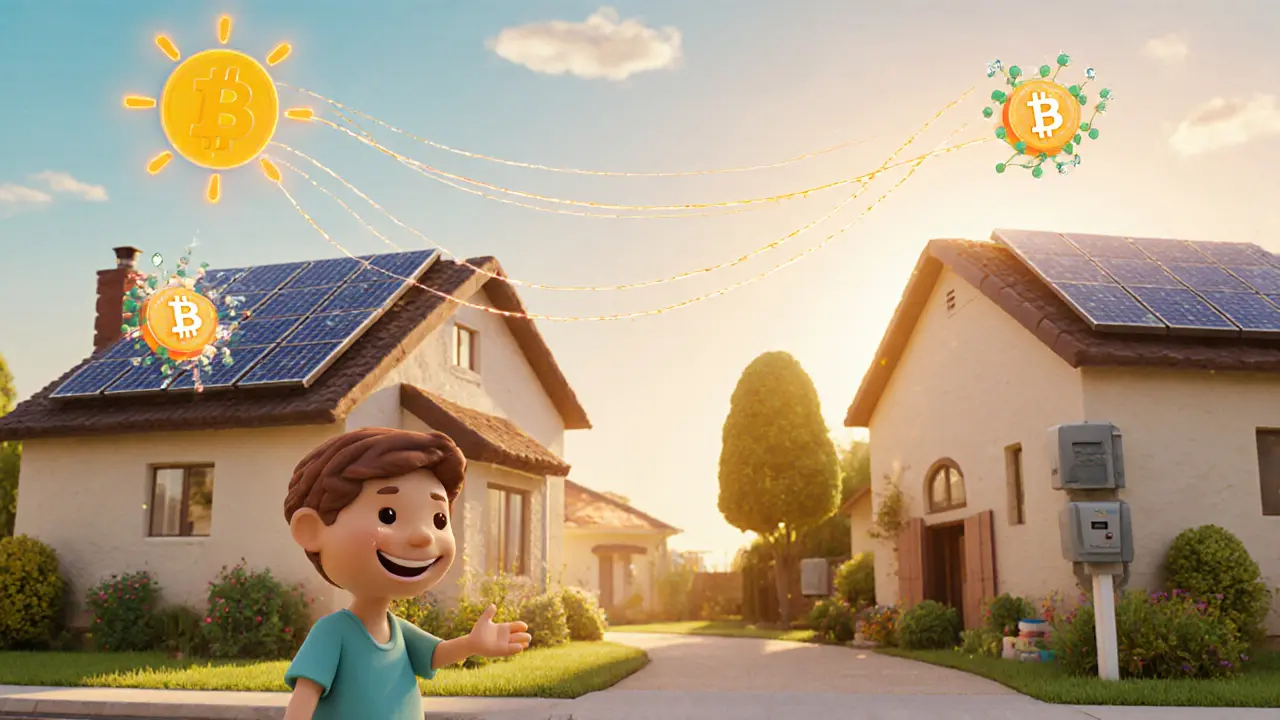Peer-to-Peer Energy Trading: How Blockchain Is Changing How We Use Electricity
When you think of peer-to-peer energy trading, a system where individuals buy and sell electricity directly with each other using blockchain technology. Also known as decentralized energy trading, it removes the middleman—power companies—and lets homeowners with solar panels sell surplus energy to neighbors in real time. This isn’t science fiction. It’s already happening in parts of Australia, Germany, and Brooklyn, where neighbors trade solar power like digital cash.
This model relies on blockchain energy, a secure, tamper-proof ledger that records every kilowatt-hour traded between users. Unlike traditional grids, where power flows one way from giant plants to homes, peer-to-peer systems turn every solar roof into a mini power station. The energy is tracked using energy tokens, digital units that represent real electricity and can be bought, sold, or stored. These tokens often run on smart contracts, so payments auto-execute when energy is delivered—no bills, no delays.
It’s not just about saving money. In places with unstable grids or frequent blackouts, like parts of Africa and Southeast Asia, peer-to-peer energy trading gives communities control over their power. A family with solar panels can earn income by selling extra energy to a nearby clinic or shop. In cities, it helps balance supply during peak hours—reducing strain on the grid and cutting fossil fuel use. But it’s not perfect. Regulatory hurdles still block it in many countries. Utilities fight back, claiming it undermines their business. And without proper security, bad actors could fake energy trades or hack smart meters.
What you’ll find in the posts below isn’t theory—it’s real cases. You’ll see how smart grids, digital infrastructure that connects energy producers, storage, and consumers in a responsive network are being built from the ground up using blockchain. You’ll read about failed experiments and surprising wins. Some projects died because people didn’t trust the tech. Others thrived because they made it simple: one app, one click, instant payment. You’ll also see how these systems connect to crypto exchanges, tokenized assets, and even regulatory crackdowns—because when energy becomes a tradable digital good, governments take notice.
This isn’t about replacing the grid tomorrow. It’s about giving people real power—literally—over how they use and pay for electricity. And if you’re curious how that works in practice, the posts ahead show you exactly where it’s working, where it’s falling apart, and what’s coming next.
How Blockchain Enables Energy Markets
Blockchain enables peer-to-peer energy trading, transparent renewable certificates, and smart grid automation-cutting costs, boosting renewables, and giving consumers real control over their energy. This is the future of power.
